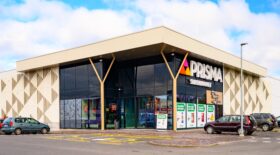Forus helped the first supermarkets in the Baltics obtain LEED certificates

This assessment is going to become obligatory for the owners of buildings once the updated directive on the energy performance of buildings comes into force in the European Union – requirements to buildings and construction works are becoming increasingly strict.
Learning how to reduce the footprint.
Ensuring proper planning, design, and construction as well as proper maintenance during the period of exploitation helps to prolong the life cycle of a building.
A more comprehensive understanding of the environmental impact of a building during its life cycle and not just its impact on the climate.
You will learn about the largest sources of emissions during production and prepare an action plan for reducing them.
Protecting the environment will become a procurement criterion in the future. During the selection process, the footprint of a building is taken into consideration in addition to price.
It is essential for the owner of a building when applying for a green certificate.
The construction and use of a building has a huge impact on the environment. We as a society are moving towards climate neutrality and reducing the footprint has become important in nearly all areas of ‘life.
Would you as an owner of a building like to know the footprint of your activity and how to operate in a more eco-friendly and sustainable manner?The life cycle assessment (LCA) of a building helps to determine the environmental impact of your building in detail during its entire life cycle. Forus helps to map the footprint of the construction of a building or the life cycle of your entire real estate portfolio.

The footprint of construction makes up about 50 per cent of the entire global footprint – materials are delivered from distant locations, excavated, manufactured, and brought to us from the other side of the world. This has a huge environmental impact.
The largest share of carbon emissions of the construction sector is caused by the exploitation of the buildings. The excavation of raw materials, manufacturing, and transportation also have a considerable impact on the climate during the construction stage of a building.
A building life cycle assessment helps look at the environmental aspects and possible impacts during its entire life cycle, starting from obtaining raw materials and ending with manufacturing, use, and destruction.

Our licensed energy efficiency specialists use the One Click LCA software for the life cycle assessments of buildings.
The LCA includes a large volume of data and information. In the assessment, we take into account all stages of the life cycle of a building, including its energy consumption, water consumption, all materials, waste, and emissions from transportation.
We map various materials used in the construction of the building – the exact manufacturing process and composition, their point of origin, how many of them must be replaced in the future, etc.




